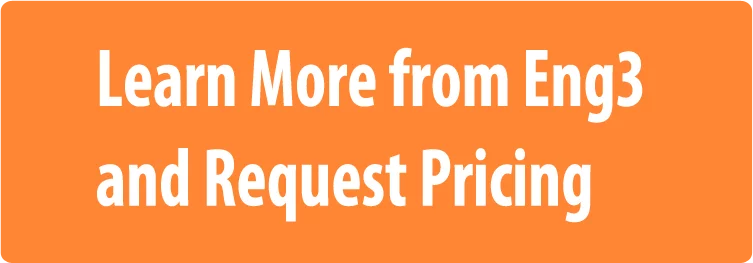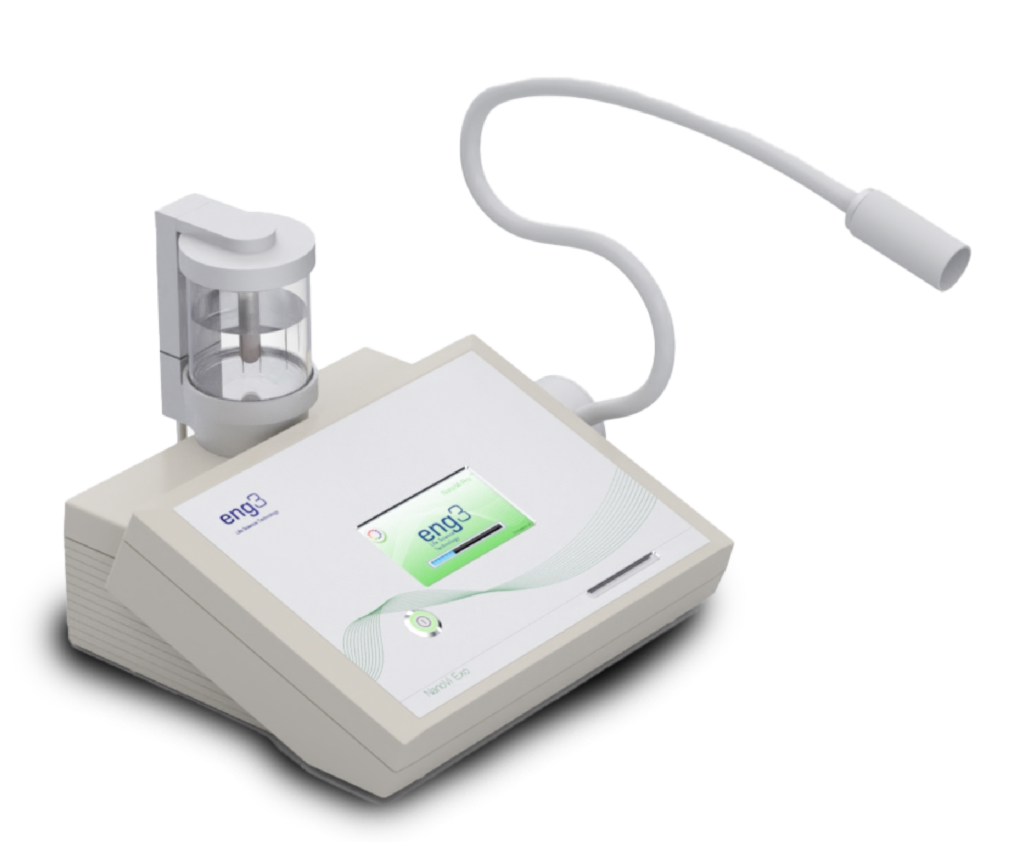HBOT and NanoVi®: An Optimized Combination to Maximize Results
Why Hyperbaric Centers see better outcomes when they follow HBOT with a NanoVi session
Hyperbaric oxygen therapy (HBOT) is often combined with NanoVi™ sessions for better overall outcomes. Considering the mechanisms behind both HBOT and NanoVi technology, this pairing is extremely intuitive and powerful. HBOT is a popular therapy used to help with a wide range of conditions ranging from diabetic foot ulcers to traumatic injuries1–4. During therapy, recipients are placed in a chamber to breathe concentrated oxygen under high atmospheric pressures5,6. This forces more oxygen into the bloodstream and leads to greatly increased oxygen-delivery to tissues throughout the body4,7. The result is more oxygen delivery to the parts of your body that need it to function.

Hyperbaric chambers increase the atmospheric pressure to enhance oxygen delivery to the tissue.
The Biological Impact of HBOT
Oxygen fuels cellular energy production, and a significant amount of extra energy is needed for successful healing8. Unsurprisingly, HBOT is known to increase energy-production capabilities both in normal tissues9 and in tissues recovering from injury10. While the energetic bonus of oxygen delivery likely contributes to many benefits of HBOT, its most important effects are believed to come primarily from something else: an increase in the production of reactive oxygen species (ROS) within our bodies11–13.
The Key Role of ROS – for Better and Worse
ROS are molecules created as by-products when our cells use oxygen to make energy14. This is one reason why flooding the body with oxygen (like in HBOT) leads to an increase in ROS generation15. ROS are important chemical signallers in biology, they trigger our bodies to increase wound growth factors, mobilize stem cells, and help reduce harmful chronic inflammation6,12,16. All these processes work to increase healing and repair damaged areas of the body.
Beyond enhancing healing, ROS can directly combat infectious agents like bacteria5,13. This ability gives HBOT an added boost in helping to treat stubborn infections. Having ROS attack and “oxidize” pathogens is certainly beneficial. Unfortunately, ROS also damage important cellular components such as DNA and proteins14,17,18. It is a double-edged sword; ROS don’t discriminate between bacterial cells and our own. While our cells have mechanisms in place to protect themselves against ROS damage, these protective abilities can be overwhelmed, leading to a condition known as oxidative stress19. Prolonged HBOT regimens can induce such a state of excessive ROS levels in humans, which may lead to negative complications7,11. This is why HBOT providers are very careful not to overdo HBOT. No matter how careful a plan is, however, a certain amount of ROS-mediated damage is unavoidable.
Increase the Benefits and Reduce the Risk
NanoVi technology boosts HBOT’s benefits while mitigating the associated risk. As mentioned before, ROS help trigger healing responses in our bodies. Triggering a healing response, however, is only half the battle. In order for tissues to repair themselves and for help to be mobilized, our bodies must produce and assemble a vast array of cellular proteins8. Proteins are the true workers of our cells—they are molecules essential to controlling chemical reactions, delivering nutrients and signals, and building the structures that define our cells and shape our tissues20. Once a protein is made, it must fold from a long strand of amino acids into its appropriate, three-dimensional structure in order to function correctly21. It therefore makes sense that for our bodies to build, repair, or simply maintain good health, the ability to both create and fold proteins efficiently is key.

The ability of proteins to fold from a chain of amino acids into a 3-dimensional shape is essential for their function and your repair and regeneration.
This is exactly where NanoVi enters to picture to enhance HBOT. Using precise wavelengths of electromagnetic energy delivered to cells throughout the body, NanoVi elicits the formation of a specifically structured water known as exclusion zone (EZ) water. This structuring of water is special, as it has been scientifically observed to increase the folding rate and structural stability of proteins22. So, as HBOT-generated ROS signal our cells to produce proteins and begin healing, NanoVi increases the rate and quality of that protein production, resulting in a synergistic effect to greatly speed up and enhance the benefits of HBOT.
How NanoVi Enhances Repair
By improving protein functions, NanoVi works to diminish risks associated with over-use of HBOT. As mentioned before, ROS can attack and damage important parts of our cells, including DNA and proteins.
HBOT and NanoVi – a Powerful Combination
With this understanding of the mechanisms behind both NanoVi and HBOT, the power of the two in combination becomes clear. HBOT delivers an abundance of oxygen throughout the body, boosting energy production and signaling for important healing processes. NanoVi gives legs to those healing processes by enhancing the efficiency and production of cellular proteins, and by protecting cellular components from the effects of HBOT-associated ROS. Such a complementary dynamic leaves little room to doubt why so many HBOT centers and their clients look to NanoVi as an essential tool to improve health outcomes.
If you’d like to learn more about the NanoVi device, its proven benefits, and the price, sign in below.
If you have any questions about how NanoVi complements oxygen therapies – or anything else, please put a note in the comments box.
References
1. Daly, S. et al. Hyperbaric Oxygen Therapy in the Treatment of Acute Severe Traumatic Brain Injury: A Systematic Review. J. Neurotrauma 35, 623–629 (2018).
2. Heyboer III, M., Sharma, D., Santiago, W. & McCulloch, N. Hyperbaric Oxygen Therapy: Side Effects Defined and Quantified. Adv. wound care 6, 210–224 (2017).
3. Chang, Y.-H. et al. Hyperbaric oxygen therapy ameliorates the blood–retinal barrier breakdown in diabetic retinopathy. Clin. Experiment. Ophthalmol. 34, 584–589 (2006).
4. Bakker, D. J. Hyperbaric oxygen therapy and the diabetic foot. Diabetes. Metab. Res. Rev. 16, S55–S58 (2000).
5. Çimşit, M., Uzun, G. & Yıldız, Ş. Hyperbaric oxygen therapy as an anti-infective agent. Expert Rev. Anti. Infect. Ther. 7, 1015–1026 (2009).
6. Thom, S. R. Hyperbaric oxygen: its mechanisms and efficacy. Plast. Reconstr. Surg. 127 Suppl 1, 131S-141S (2011).
7. McMonnies, C. W. Hyperbaric oxygen therapy and the possibility of ocular complications or contraindications. Clin. Exp. Optom. 98, 122–125 (2015).
8. Demling, R. H. Nutrition, anabolism, and the wound healing process: an overview. Eplasty 9, e9–e9 (2009).
9. Aylin-Burns, N., Krager, K. J., Zhou, D. & Hauer-Jensen, M. Investigating the effects of hyperbaric oxygen on mitochondrial function of endothelial progenitor cells. FASEB J. 31, 711.7-711.7 (2017).
10. Daugherty, W. P., Levasseur, J. E., Sun, D., Rockswold, G. L. & Bullock, M. R. Effects of hyperbaric oxygen therapy on cerebral oxygenation and mitochondrial function following moderate lateral fluid-percussion injury in rats. J. Neurosurg. 101, 499–504 (2004).
11. Benedetti, S. et al. Oxidative stress and antioxidant status in patients undergoing prolonged exposure to hyperbaric oxygen. Clin. Biochem. 37, 312–317 (2004).
12. Bosco, G. et al. Hyperbaric oxygen therapy ameliorates osteonecrosis in patients by modulating inflammation and oxidative stress. J. Enzyme Inhib. Med. Chem. 33, 1501–1505 (2018).
13. Memar, M. Y., Yekani, M., Alizadeh, N. & Baghi, H. B. Hyperbaric oxygen therapy: Antimicrobial mechanisms and clinical application for infections. Biomed. Pharmacother. 109, 440–447 (2019).
14. Schieber, M. & Chandel, N. S. ROS function in redox signaling and oxidative stress. Curr. Biol. 24, R453–R462 (2014).
15. Zhou, Q., Huang, G., Yu, X. & Xu, W. A Novel Approach to Estimate ROS Origination by Hyperbaric Oxygen Exposure, Targeted Probes and Specific Inhibitors. Cell. Physiol. Biochem. 47, 1800–1808 (2018).
16. Grimberg-Peters, D., Büren, C., Windolf, J., Wahlers, T. & Paunel-Görgülü, A. Hyperbaric Oxygen Reduces Production of Reactive Oxygen Species in Neutrophils from Polytraumatized Patients Yielding in the Inhibition of p38 MAP Kinase and Downstream Pathways. PLoS One 11, e0161343–e0161343 (2016).
17. Lobo, V., Patil, A., Phatak, A. & Chandra, N. Free radicals, antioxidants and functional foods: Impact on human health. Pharmacogn. Rev. 4, 118–126 (2010).
18. Phaniendra, A., Jestadi, D. B. & Periyasamy, L. Free radicals: properties, sources, targets, and their implication in various diseases. Indian J. Clin. Biochem. 30, 11–26 (2015).
19. Pizzino, G. et al. Oxidative Stress: Harms and Benefits for Human Health. Oxid. Med. Cell. Longev. 2017, 8416763 (2017).
20. B, A., A, J. & J, L. Protein Function. in Molecular Biology of the Cell (Garland Science, 2002).
21. Dobson, C. M. Protein folding and misfolding. Nature 426, 884–890 (2003).
22. Zuo, G., Hu, J. & Fang, H. Effect of the ordered water on protein folding: An off-lattice Go-like model study. Phys. Rev. E 79, 31925 (2009).
23. Reichmann, D., Voth, W. & Jakob, U. Maintaining a Healthy Proteome during Oxidative Stress. Mol. Cell 69, 203–213 (2018).
24. Yablonskaya, O. I., Trofimov, A. V., Voeikov, V. L., Novikov, K. N. & Buravleva, E. V. Evidence of Protective and Regenerating Properties of NanoVi water vapor. in Annual Water Conference 1 (2018).
25. Sharma, V. et al. Oxidative stress at low levels can induce clustered DNA lesions leading to NHEJ mediated mutations. Oncotarget 7, 25377–25390 (2016).
26. Dörr, W. & Bozsaky, E. Improved Regeneration of DNA Double Strand Breaks with NanoVi(TM) Bio-identical Signaling Technology. (2014).






